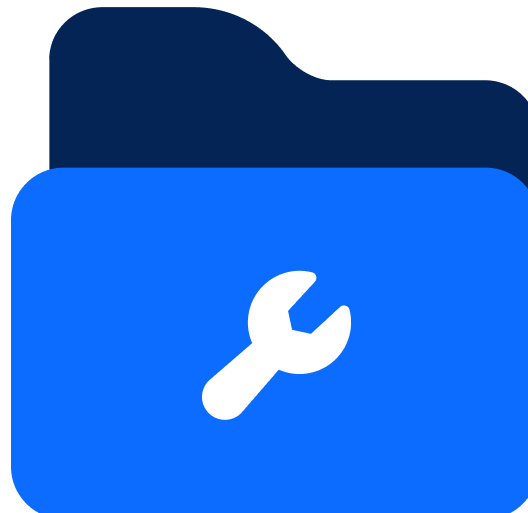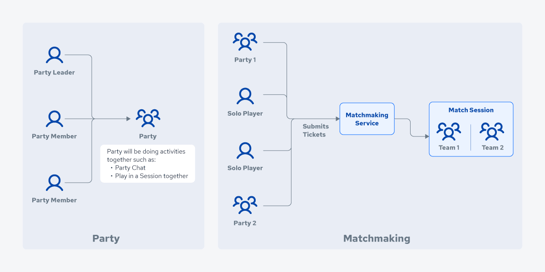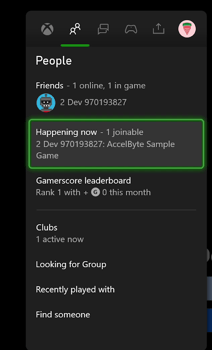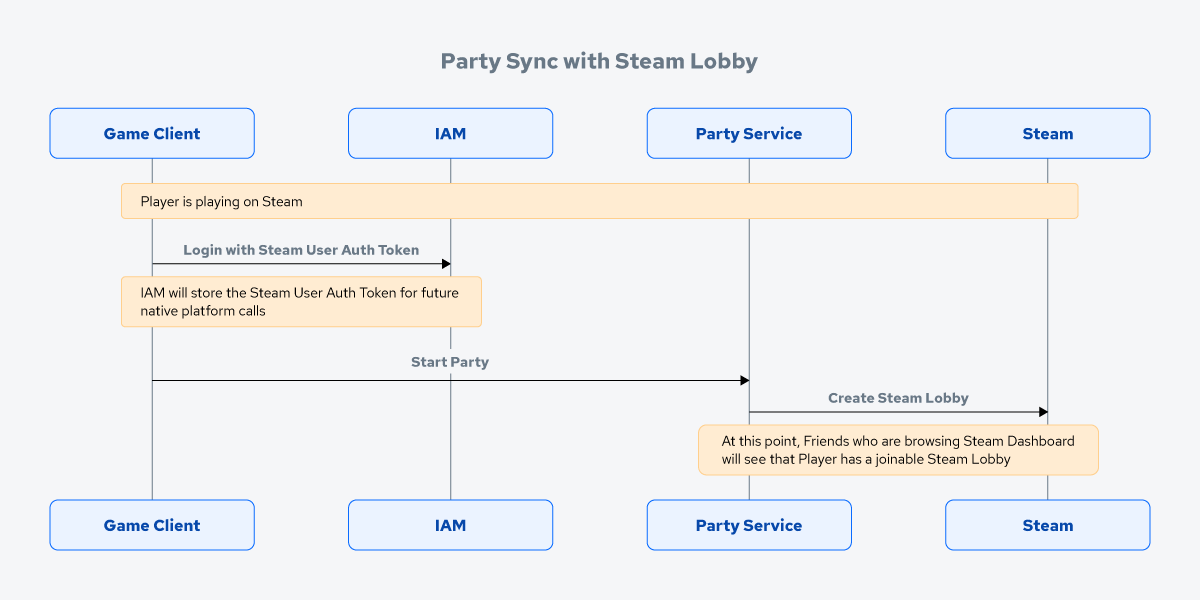Getting Started
Introduction to AccelByte Gaming Services (AGS)

Backend Services
Skip boring dev work with plug-and-play systems for 80% of your game’s backend

Backend Customization
Build 20% of the backend that makes your game unique without managing it

Server Orchestration
Automate spinning up and scaling servers globally for smooth, low-latency sessions

Build Distribution
Deliver builds faster to testers worldwide so you can ship multiple times a day

Crash Reporting
Catch and fix bugs before players see with real-time crash data and full context

Tools & Utilities
Monitor gameplay, test your setup, and tweak your game without juggling external tools
Introduction to AccelByte Gaming Services (AGS)
Learn to use AGS with our demo game "Byte Wars"
Connect and get support with other members of the AccelByte Community
Submit and review tickets while directly connecting with AccelByte
Join our Discord for support, insights, and networking!

After a lot of research and deliberation, you’ve decided to go all-in on enabling a cross-platform experience for your game. You’ll quickly realize that there are many things to tackle when enabling cross-platform capabilities.
Games like Diablo IV support not only full crossplay across PlayStation, Xbox, and PC (via Battle.net), they lean heavily on the game’s social aspect, such as enabling a 10% experience bonus when you play in a party. In other team-based competitive games such as Predecessor or Spligate, teams with parties in it are considered to be advantageous, resulting in adjustments in how parties MMR are measured during matchmaking.
Playing with friends and people you know are not only fun, but also giving players the competitive edge that they need to play better.
However, enabling a cross-platform party is challenging due to its behind-the-scenes complexities.
Capcom has announced that their latest multiplayer team shooter game, Exoprimal, won’t have cross-platform party at launch. "On day one, Exoprimal will support cross-platform matchmaking, but party creation will be specific to each platform ecosystem."
For a cross-platform team-based game, not having the ability to play with your friends outside of your platform affects the player's experience. That means that Xbox players won’t be able to play with their PlayStation or Steam friends directly.
But wait, they said “cross-platform matchmaking”, doesn’t that mean you should still be able to play across platforms with your friends?
Kind of; let’s dig in.
Forming a party in a game is creating a temporary group with your friends (and their friends) to communicate or play together. This can range from having party-specific text or voice chat or playing together in a game session.
Party formation is deliberate - a player will start a party (becoming the party leader), and invite their friends to join the party, in which they can then invite their friends to join as well.
On the other hand, matchmaking has an element of randomness. A player (or a group of players - like a party) can submit a match ticket to find a game. The matchmaking server will look at all the tickets - and, based on criteria such as geolocation, skills, or player preference - will match together a set of tickets and create a match session.
When you participate in matchmaking, you will match up with random players to play together.
So forming a cross-platform party is deliberate, while cross-platform matchmaking is primarily random.
Typically, party and matchmaking work together in most cross-platform multiplayer games. Using AccelByte Gaming Services (AGS), you can have a party leader submit a matchmaking request on behalf of the party to join other players or parties to play together.

There are a series of steps you need to take to ensure your game can support creating cross-platform parties.
First, you must capture your player’s identity and username/gamertag in your game level, which spans all platforms. One challenge with cross-platform identities is that players may have unique usernames on different platforms. For example, a player with the Gamertag “AwesomePlayer” on Xbox might have a different username on PlayStation.
This means that you need to create a link between their chosen platform identity to your Cross-Platform Game Identity, as soon as the user logs in to your game using the Platform Auth Token.
Learn more about how AGS Accounts work here.
You must ensure your game supports a cross-platform friends list to allow players to form cross-platform parties to play together. Essentially, you want to enable your players to find their friends in your game, regardless of which platforms their friends play on. This is on top of the friends list that they have on the platform level, for instance, Steam friends, Xbox friends, etc.
Some ways to make it easy for your friends to quickly find their friends:
To learn more about AGS Friends capabilities, check out our documentation.
After you enable your players to be able to find their friends in-game, the next is to build the in-game party experience!
Here are a few things that you want to keep in mind when you are building your in-game cross-party experience:
To learn more about AGS Party capabilities click here.
The last, and probably the most tricky part of cross-platform party, is to let players discover, receive invites, and join their friends' parties and games, directly from the dashboard of the platform they play at - Steam, Xbox or PlayStation; even when your game is not even running.
.png?width=217&height=350&name=image%20(3).png)
Invite and Join Steam menu

Xbox Dashboard showing friend’s joinable session
To enable this experience, you need to do direct integration between your party system and the various platform’s party and session endpoints.

See more Steamworks Lobby API
Cross-Platform Party system, when done right, can help improve player experience in playing together with their friends - regardless what platforms they are playing on.
Depending on the game’s multiplayer design, a cross-platform party system can be used in conjunction with cross-platform matchmaking, and can be a powerful tool to unify your entire player base.
Interested in learning more? Request a demo here.
Reach out to the AccelByte team to learn more.